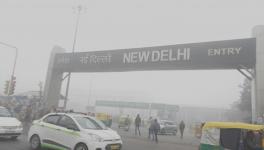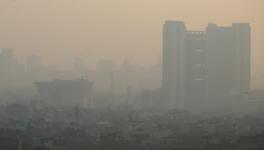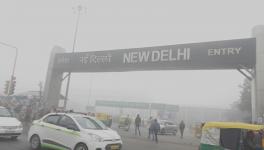Delhi’s Hazy Autumn Sky: Reasons to See Beyond Stubble Burning
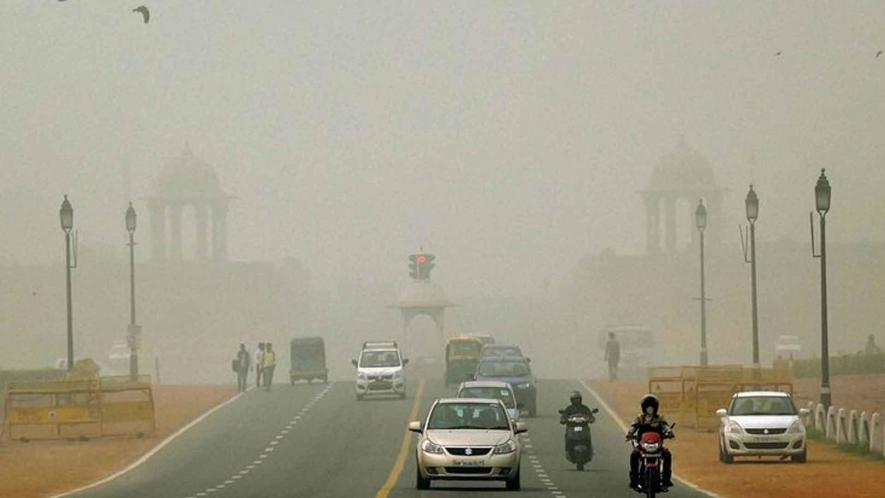
Autumn is no more as pleasant in Delhi as it used to be. Every year, towards the end of October, Delhi gets its air quality declining sharply. Much hue and cry has been raised about Delhi’s air pollution, and through media headlines efforts have been made to establish that stubble burning in the neighbouring states of Punjab and Haryana is the primary reason of it. But this is a heavily misplaced narrative, and an easy one to promote.
There are many contributory factors that bring Delhi an unhealthy weather, stubble burning is only one among them, not the primary one. Stubble burning, again, is a transient phenomenon and Delhi’s worrying winter pollution is more deep-rooted. Let’s see point by point.
The Inversion Effect
First, the smog over Delhi and other parts of the Gangetic plains starting from autumn is attributable to seasonal weather conditions and also presence of different pollutants. During mid-autumn, when the temperature starts decreasing, cooler air stays near the ground. This is because the inversion effect—a layer of warm air settling above the cooler air below. This prevents the vertical dispersion of the cooler air. With the cooler air settled near the ground, pollutants in the air also remain near the ground. On the other side, during summers, the air near the ground also gets heated up with the temperature, and the hot air disperses vertically. With the inversion effect not in place, the pollutants also rise to higher altitudes and eventually get dispersed. In winters, more biomass is burnt, for heating, than in summers.
The differential climatic conditions during winter and summer can be thought of as the reason for winter smog at the first place.
Other Prevalent Pollutants
Second, we need to look into the pollutants that are prevalent in the air of Delhi and North India. These pollutants chiefly are from vehicular emissions, construction, road dust, and industries. Also coal and wood burning in brick kilns, homes and eateries contribute to the pollution.
Also Read: Stubble Burning and Smog: Farmers as Scapegoats
These pollutants are there to stay in the sky throughout the year. Stubble burning becomes a factor during October-November only, which is transient. Obviously, stubble burning is a contributory factor to the air pollution, but it is only a part of the larger pollution causing agents.
Let’s imagine a situation where stubble burning does not take place. Will there be no air pollution or smog? No, there will be air pollution and winter smog, because the other contributory factors are going to stay even in the absence of stubble burning.
Let’s have a look at some data. The Central Pollution Control Board’s national air quality monitoring programme (NAMP) shows a clear trend of increasing PM2.5 and PM 10 in Delhi, with pacing in 2015, 2016, 2017. The data shows that the annual average of PM 2.5 has exceeded the standard value of 40 micrograms per cubic meters since 2009 and since 2015 it is on an increase by 2-3 times above the standard mark.
Also Read: Pollution Alert Over North India: Anti-Stubble Burning Moves Go Up in Smoke
The continuous increase in PM values is an indication of local emission level. Stubble burning is obviously contributing towards it, but can’t be considered as the only factor, as is being portrayed by the media.
A recent analysis in Times of India has shown that stubble burning in 2018 has gone down by 43% as compared to last year in Haryana. But this year also Delhi sees no respite of smog before the winter arrives in full swing.
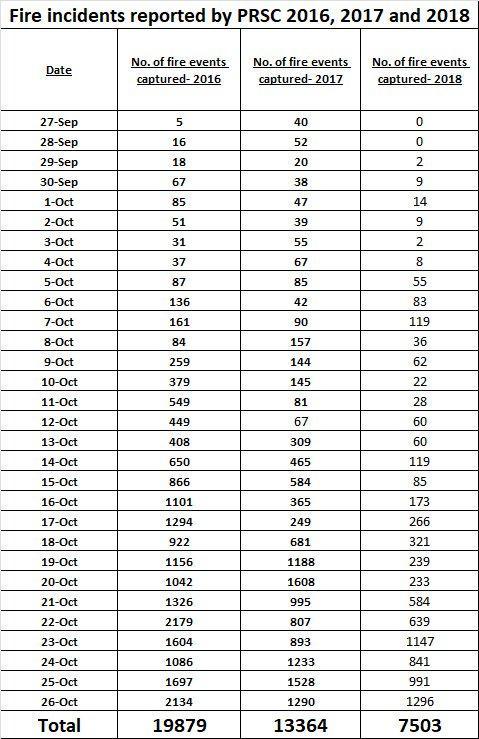
Chart taken from TOI.
Moreover, during Diwali the firing of massive crackers also contributes to owe. Despite court banning crackers, Delhi is yet to get rid of it. In Diwali, the massive fire crackers burnt in a single day becomes a huge load to the air due to the combustion emission. With the climatic condition of temperature inversion, it adds more load to the air above creating day long smog for many days.
Stubble Burning is a New Phenomenon
Stubble burning is a phenomenon particular to the region of Punjab and Haryana. And this is a phenomenon that has not been in practice traditionally. The link can be traced back directly to green revolution and an extensive mechanisation of farming. Traditionally, paddy was not grown in Punjab and Haryana—this region traditionally used to cultivate wheat. It is only after green revolution that paddy makes its way into the farming pattern of Punjab and Haryana. At this time of the year, the paddy stubble has to be removed from the fields to make it ready for sowing of wheat which is a winter crop.
Also Read: What Makes A City ‘Smart’?
Again, nowadays the paddy and wheat are harvested using mechanical tools that cut the paddy and wheat leave stubble of about a foot and a half from the ground. The traditional methods of harvesting would leave stubble of length of few inches only. The long stubble left by using mechanical tools are in no way can be ploughed easily. To remove them from the field using methods and tools other than set them on fire would cost the farmers heavily. In this situation, the farmers choose the easy way of setting the stubble into fire. Although subsidies have been given to the farmers, this doesn’t appear to fulfill the requirement of the farmers.
The government can take the initiative to manage the stubble to be used in other sectors like power generation, paper or board manufacture etc. where the stubble can be proven beneficial. But this still remains far from reality.
Get the latest reports & analysis with people's perspective on Protests, movements & deep analytical videos, discussions of the current affairs in your Telegram app. Subscribe to NewsClick's Telegram channel & get Real-Time updates on stories, as they get published on our website.










